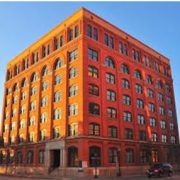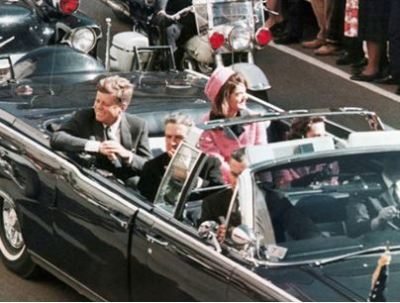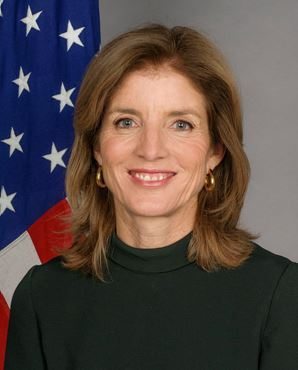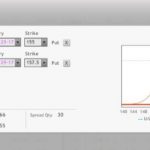Passing through Dallas, Texas on the way to my Strategy luncheon, I couldn't help but remember the assassination of president John F. Kennedy, on November 22, 1963, over 50 years ago.
The tragedy offers valuable lessons for today's traders, although we have to travel a circuitous route to get there.
It was one of those epochal events, where people remember exactly what they were doing when they heard the news, like the 1942 Japanese attack on Pearl Harbor, and the 9/11 attacks on the World Trade Center.
During the middle of my 5th grade class there was a school wide announcement that the president had been shot while campaigning in Dallas, Texas, but was still alive. Hours later, we were told he was dead. The teachers started crying, and we were all sent home.
For the rest of the week, we were transfixed by the tumultuous events on our black and white, rabbit eared television sets. Lyndon Johnson was sworn in as president on Air Force One. Lee Harvey Oswald was arrested. Then nightclub owner Jack Ruby shot him in a Dallas jail.
It was all so surreal, witnessing history unfold before you. I remember that my dad told me this all might be a prelude to a military coup d' etat, or a Soviet nuclear attack, and that we should be prepared for the worst.
Our stockpile of canned food to feed our family of nine from the previous year's Cuban Missile Crisis was still in its cases. So were the boxes of ammunition. Those were scary times.
It seemed like the country went to pieces after that. The Vietnam War ramped up, igniting huge national demonstrations. Some 60,000 of our guys died, including three from my high school graduating class.
Race riots followed, setting cities on fire. I got caught in the ones in Los Angeles and Detroit. Then came the Oil Crisis, Watergate, and the Iran Hostage Crisis.
Things didn't get back to normal until the 1980's, and guess what? The stock market started going up, and I got into the hedge fund business.
The Kennedy assassination sparked an entire industry of conspiracy theorists, armchair historians, and assorted nut jobs, whose mission was to debunk the conclusions of the Warren Report.
Thousands of books were published, and even more lectures delivered. It inspired us all to distrust our government.
After all, we were told that Oswald made an impossible shot, and only a "magic bullet" could achieve what the report claimed. Witnesses died like flies, against all actuarial probability. The old Italian rifle he used to commit the crime was impossibly flawed.
I tended to believe the version that was taught in California state textbooks as late as the 1990s, that Kennedy was the victim of either a CIA, Mafia, or Cuban plot. The Hollywood director, Oliver Stone, fanned the flames with his 1991 film, JFK.
Then one day during the late eighties, while visiting big oil clients for Morgan Stanley, I found myself with a couple of free hours to kill in Dallas, Texas. I took a taxi to the Texas School Book Depository on Elm Street, now a museum.
It was a weekday, and I was the only visitor. So I took the elevator up to the 6th floor. There, at a corner window, cases of books were set up exactly as Oswald had placed them on that fateful day.
I looked around, saw no one else, and then deftly stepped over the rope that barred public access.
It turned out that I shared some personal history with Lee Harvey Oswald. We had both been in the Marine Corps, and obtained a marksman's rating, which earned you a few extra dollars a month.
He had also been stationed in Japan a few years before, at a base I knew well. So I had always been curious about Oswald's incredible shot.
I sat down in the exact spot that Oswald had and watched the traffic below. At 62 feet away, the cars were moving at 8 miles per hours, the same speed as the Kennedy motorcade. Then it hit me.
This was not an impossible shot. This was not even a hard shot. I could make this shot. In fact, half the Marines who went through basic training at Camp Pendleton could have made this shot on a bad day with a stiff wind.
It was a revelation.
It meant that the Warren Report was right. Oswald was the single shooter. It meant that all of the conspiracy theories I had heard about over the decades were lies.
Not only that, I also realized then that all conspiracy theories about everything were untrue, usually manufactured by people with ulterior motives, almost always driven by the desire to make money. The level of cooperation required between large numbers of people is far too improbable.
After that, theories about the Kennedy assassination started to unravel. During the 1990s, the investigative TV program, 60 minutes, got several professional marksmen to easily replicate Oswald's feat of getting off three shots with the same antiquated bolt action rifle in less than three seconds.
After a deal with congress in 1992, the government released 5 million pages of evidence on which the Warren Report conclusion was based, which had previously been secret (click here for the National Archives link).
We obtained hours of classified testimony from Marina Oswald, Lee Harvey's Russian wife, about how troubled the man was.
We discovered that a dozen people saw a man with a rifle in the window of the Book Depository minutes before Kennedy was due to pass by. They screamed at the police to intervene, but none could hear them over the noise.
The fourth shot from the "grassy knoll" recorded over a police radio with a broken microphone button turned out to be an echo off a building.
The FBI was aware that Oswald had taken a shot at the home of an army general only months before. A memo warning the Secret Service of the threat was found crumpled up in a Dallas agent's desk drawer.
The Kennedy assassination has become a favorite topic of modern risk analysts who advise hedge funds. The Secret Service was well aware of many assassination risks for the liberal, democratic president from Boston from a wide assortment of right wing fanatics in the Deep South, and they chased down many of them.
No one imagined that the actual attempt would come from the left, and they were blindsided. It is a valuable lesson that we trade and invest by today.
Finally, it was all put together is a 2007 book by Vincent Bugliosi, Reclaiming History: The Assassination of President John F. Kennedy.
I had the misfortune of working with Bugliosi while he was prosecuting cult mass murderer, Charles Manson (while working for the Los Angeles County Coroner, I had dug up some of his victims in the California desert, one with a missing head). I always found him a show boater and a tireless self-promoter.
However, in the book, Bugliosi does a masterful job of weaving together declassified evidence, testimony from missing witnesses, and the contribution of modern technology.
His conclusion: the Warren Report was dead right. As deranged as Oswald was, there was one thing he could do well, and that was to shoot straight. He then proceeds to expertly demolish every conspiracy theory out there, and uncover their promoters as the profit driven charlatans that they are.
Oliver Stone was a better storyteller than a historian.
It turns out that being perennially disbelieving of conspiracy theories is quite a useful philosophy to have as a trader. We are often asked by the media to believe in the conspiracies that underpin certain investment theses. Bet against them, and you'll win every time.
If we don't fight them in El Salvador, then we'll be fighting them in the streets of Los Angeles. Russia wants to take over the world, and when they finish their work in the Ukraine, we are next.
We have to invade Iraq because Saddam Hussein is imminently going to use his weapons of mass destruction against us. And don't get me started on the Ebola Virus.
When gold hit $1,900 an ounce six years ago, I heard that the bars inside Fort Knox were made of lead and painted gold. When this was discovered, the price of the barbarous relic was supposed to soar to $50,000 an ounce. I sold gold short.
After Barack Obama was elected president in 2008, the Internet abounded with assumptions of a vast left wing conspiracy that pegged our new president as a socialist, was born in Kenya, was going to destroy corporate America, and take away all of our guns.
Those who bought the story sold all their stocks because the market bottom, unloaded their homes, and ditched all their bonds because the US government was going to default on its debt, ignite hyperinflation, and collapse the dollar. The advice was to put all your money into gold.
I didn't believe any of this for a second, and did the exact opposite of what the Armageddon crowd was urging on to followers.
I bought stocks, ultra high yielding junk bonds, MLP's, REITS, and every other risk asset out there while avoiding gold like the plague. I sold short the Japanese yen and the Euro against the US dollar. So did my subscribers. You know the rest of the story. Some of my picks rose tenfold.
I met Senator Ted Kennedy when he was running for president in 1982, and have kept in touch with his staff ever since. They told me he hit the deck whenever he heard a loud noise, be it a firecracker, a backfiring car, or even a slammed door. He lived a lifetime in constant fear of assassination.
Some scars never heal.
On my next trip to Tokyo I will be spending some time at the magnificent, white stucco edifice that has been the residence of US ambassadors there for nearly 100 years.
I will also give a briefing to our ex ambassador, Caroline Kennedy, the daughter of the late president, who served as the 29th United States ambassador to Japan until January, 2017.
The National Archives will release the last of its files on the assassination 70 year after the event, on November 22, 2033.
I hope to live that long, for by then I'll be nearly 82. Then for me, the Kennedy story will come full circle.
Taking the Story Full Circle





